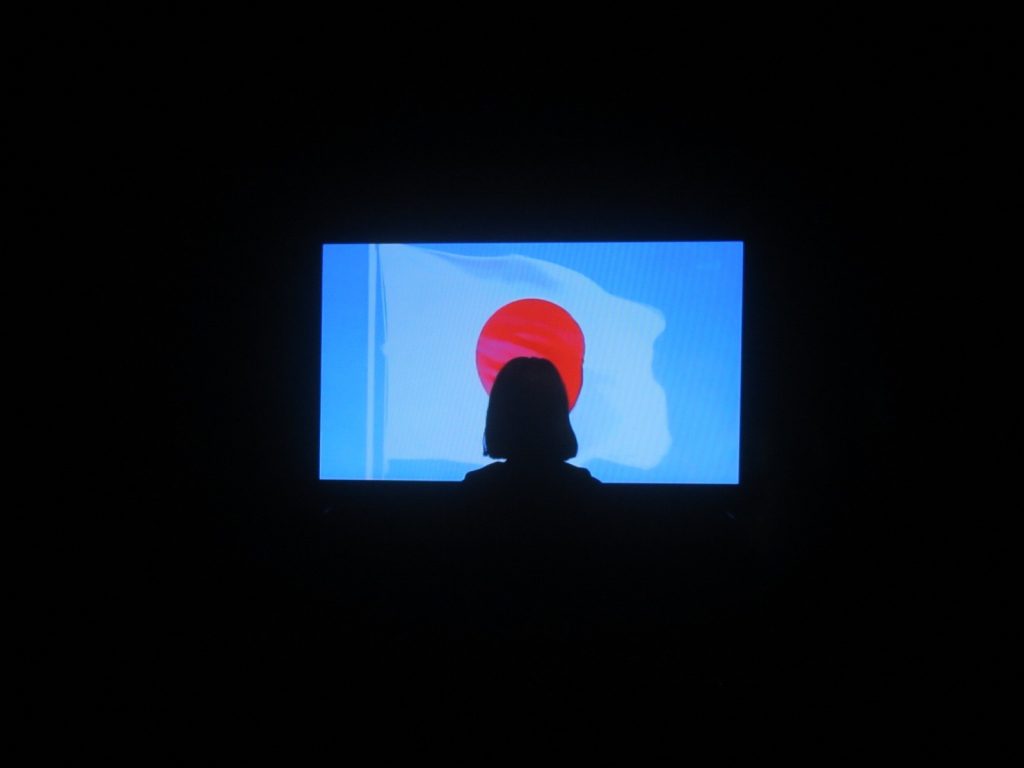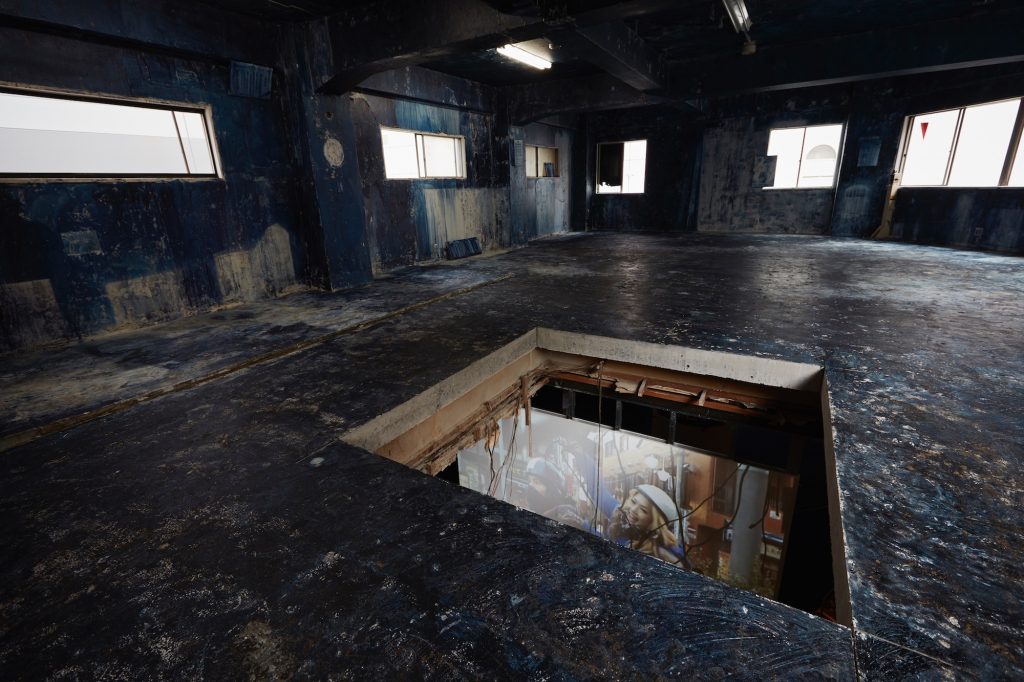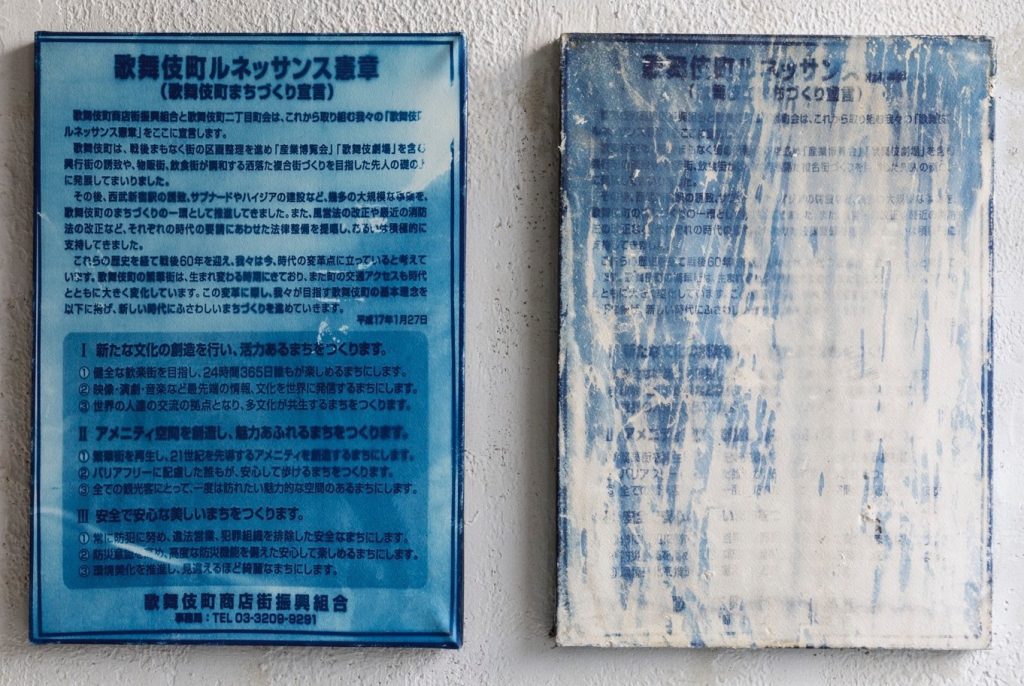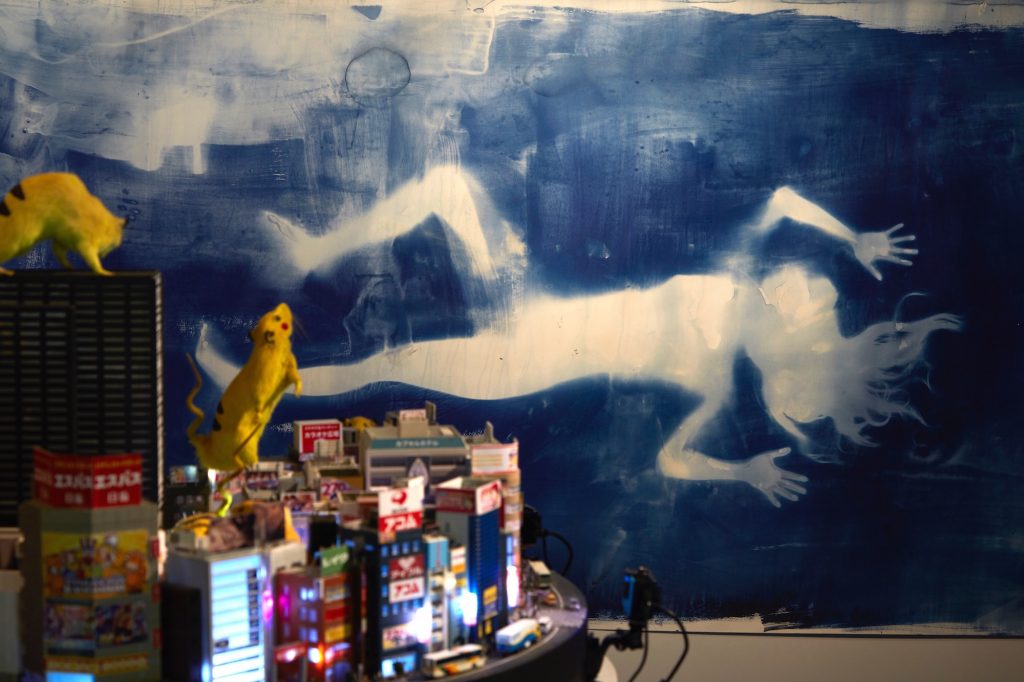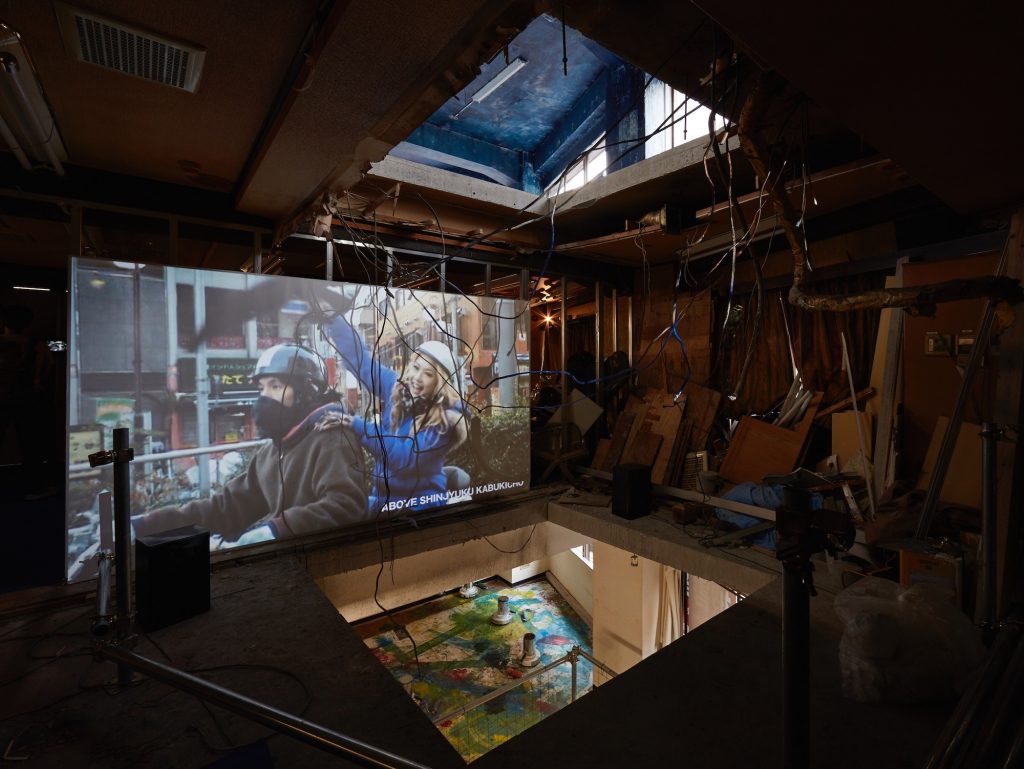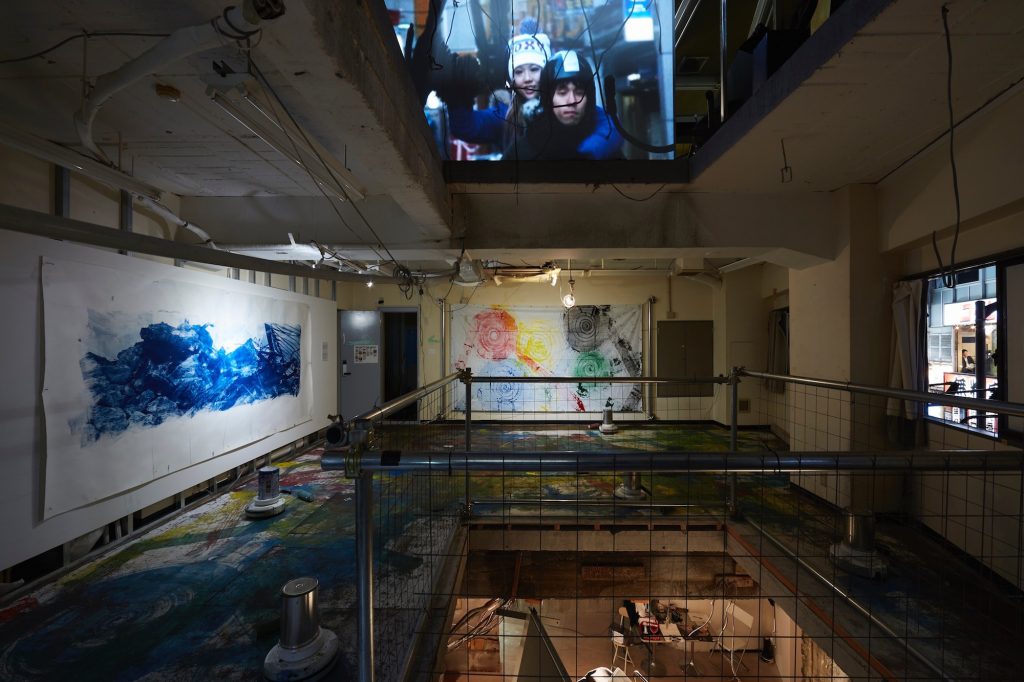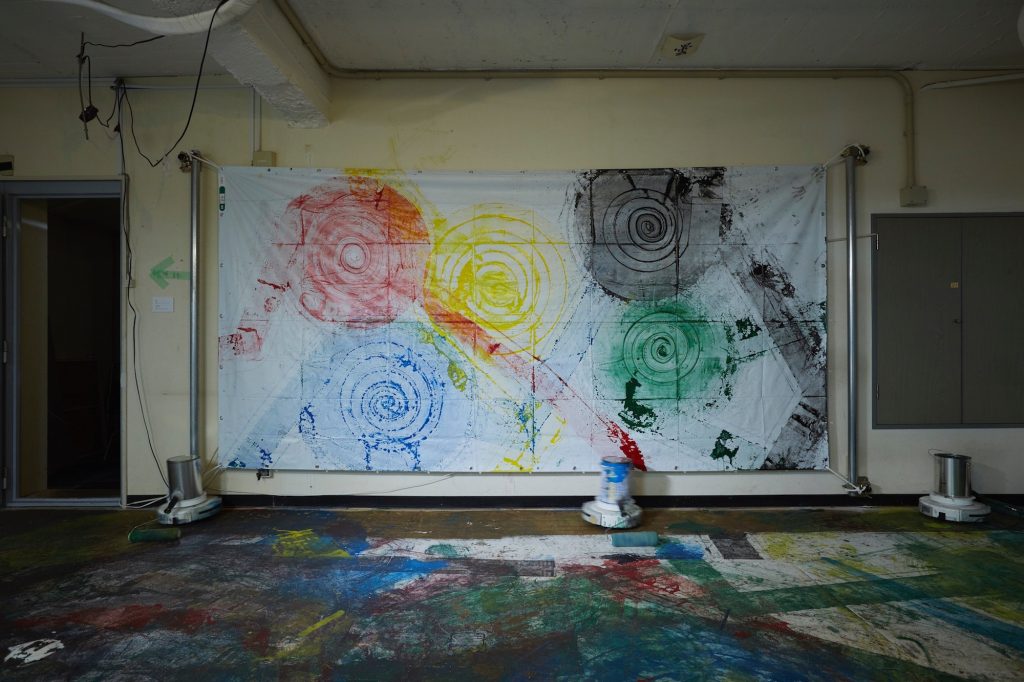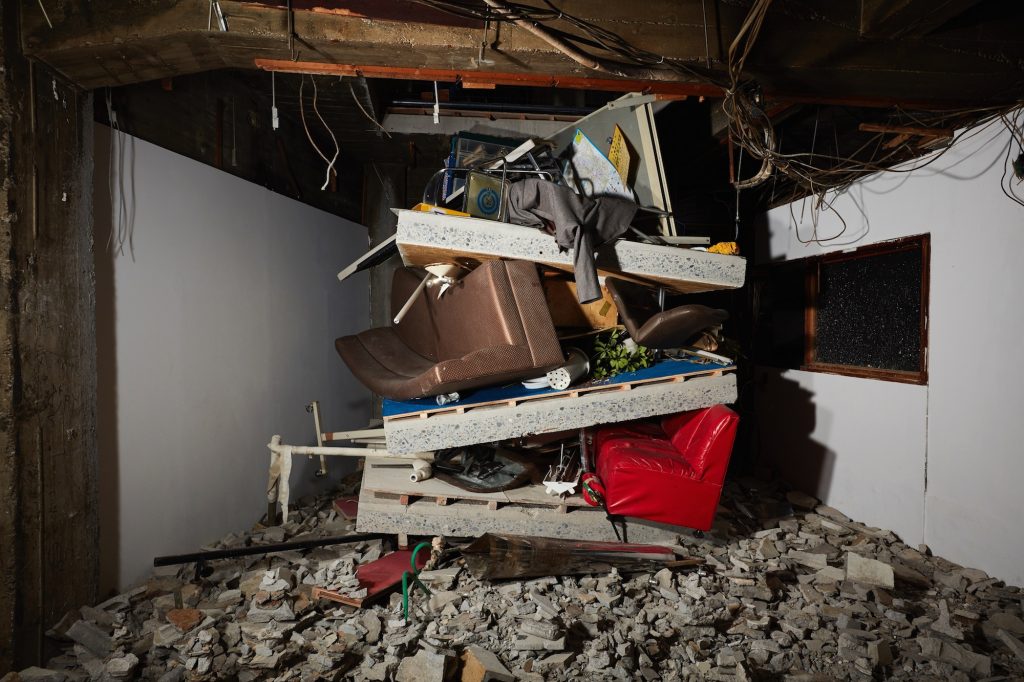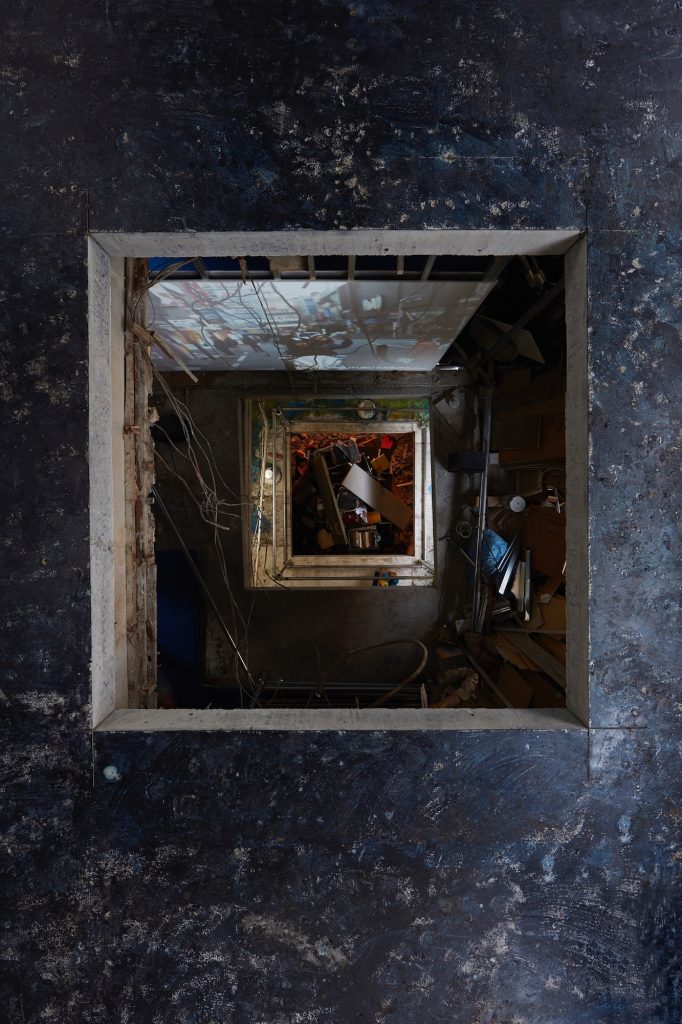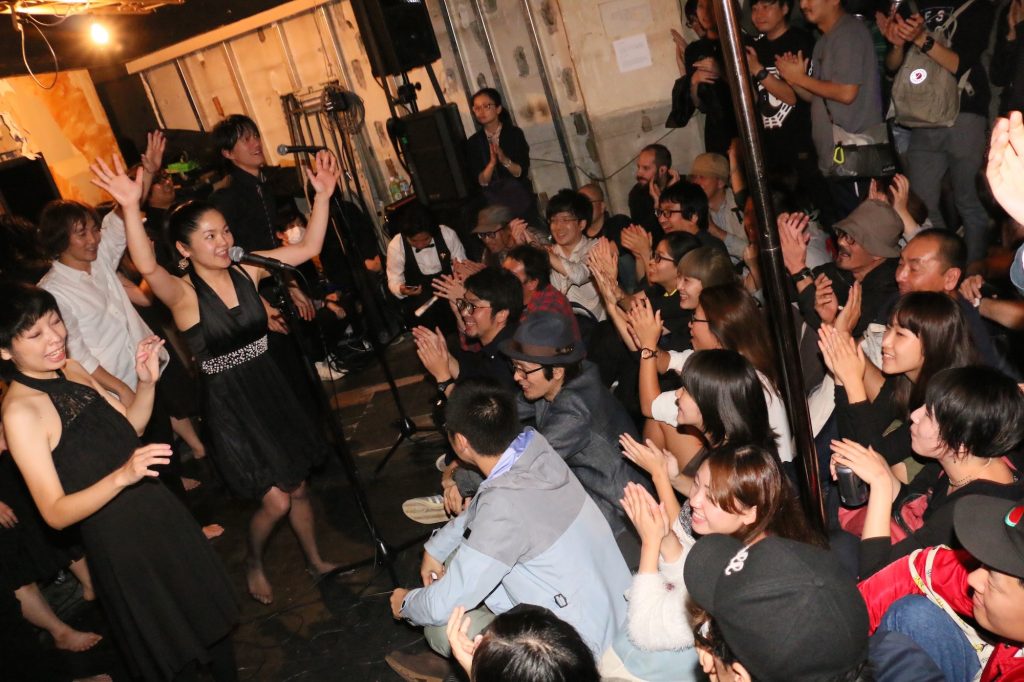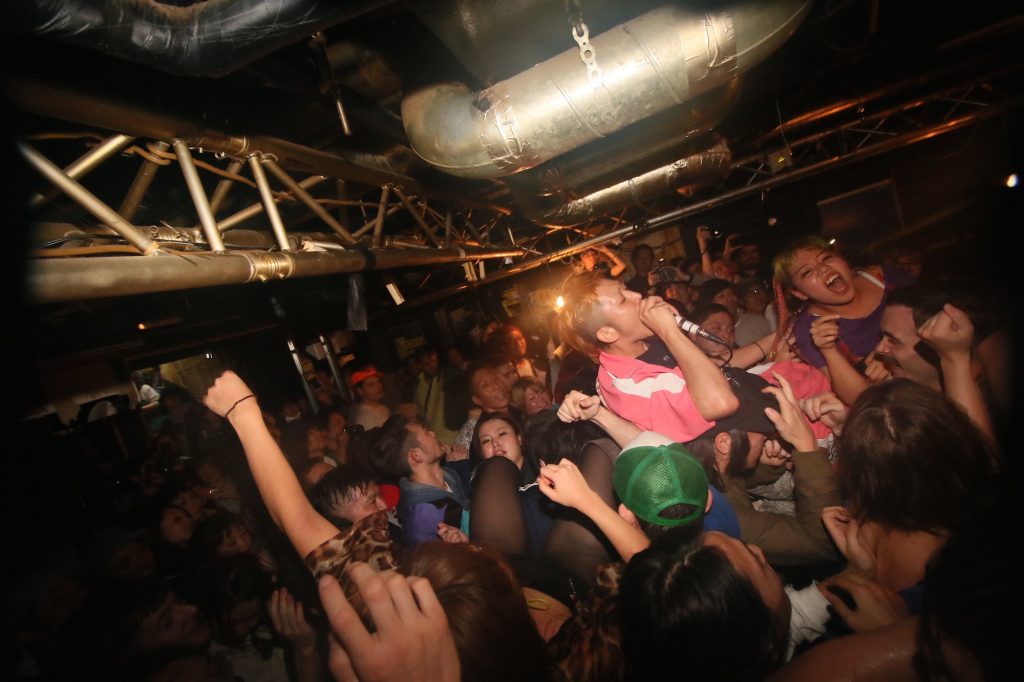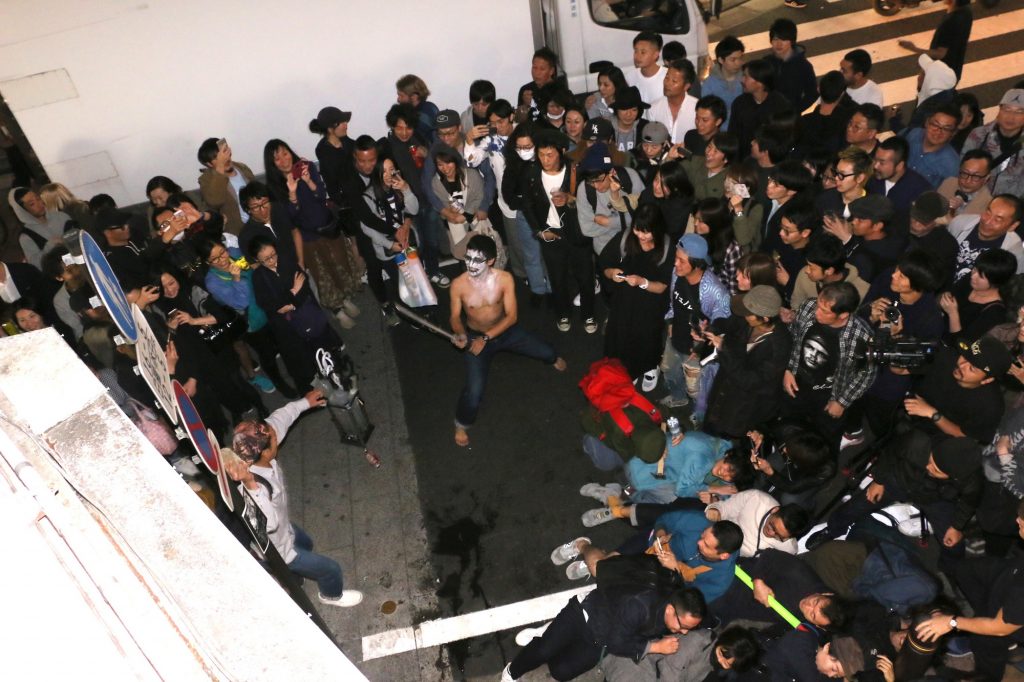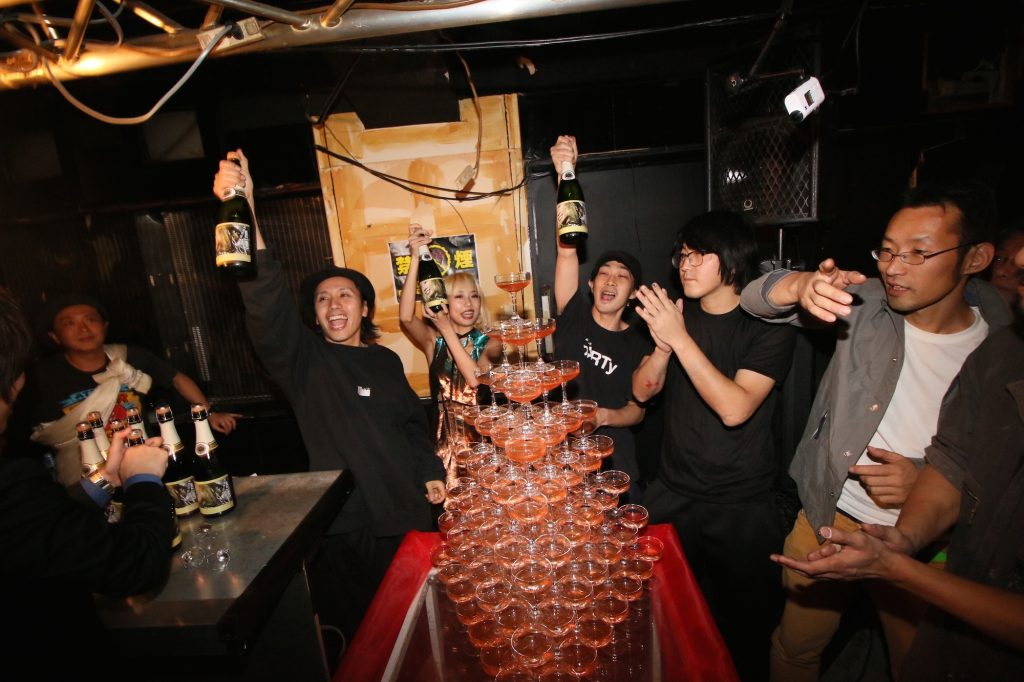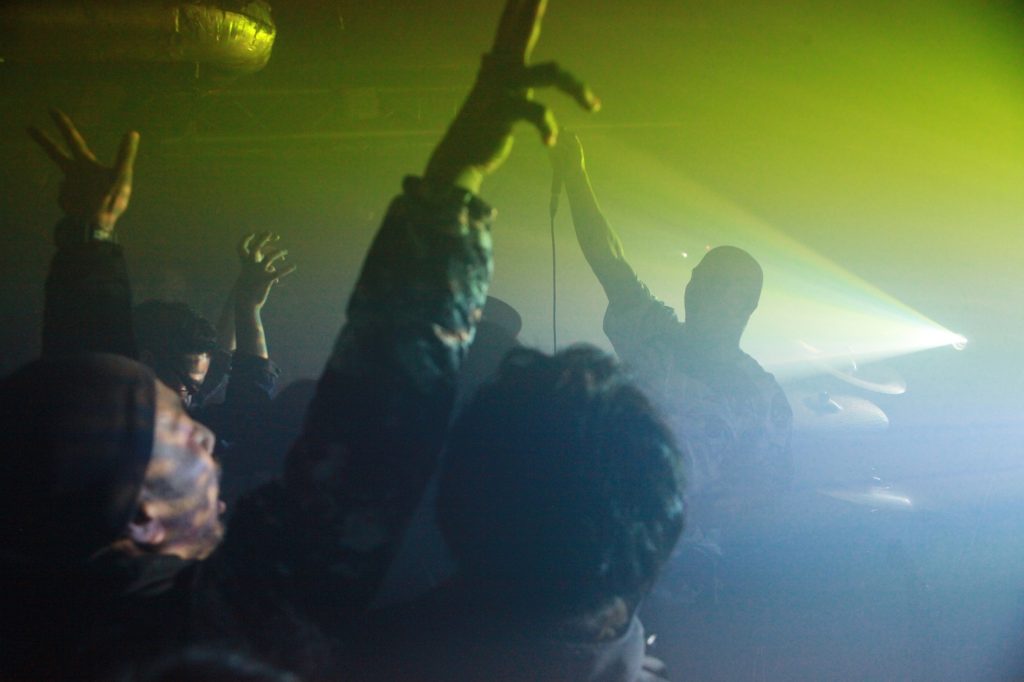"Scrap and Build" Chim↑Pom’s artworks will not be removed even after the show ends, meaning that this exhibition will be completely destroyed along with the building. Then Chim↑Pom will collect the fragments of artwork- turned-debris that will share the same fate as the building, and reconstruct them. Adding the “C” and “P” neon signs preserved from Shibuya’s iconic fashion mall PARCO, which will also be demolished, they will show the second iteration of this project at their artist-run-space Garter in Kitakore Building early next year. In collaboration with architect Takashi Suo, they will also DIY renovate Kitakore Building, a shack-like space that has existed since before WWII, for the exhibition.
4th floor drawing a blueprint version 2
4th floor RENAISSANCE Charter
3rd floor Black of Death
3rd floor SUPER RAT -Diorama Shinjuku-
3rd floor Drawing Mirai
3rd floor Libido-Electricity Conversion Machine "Erokitel" Fifth Version
3rd floor Reflecting on the beauty of a rainbow
2nd floor Downtown Paradox
2nd floor The people make the city
2nd floor 5 Rings
1st floor Build-Burger
1st floor 賽 - offering
1st floor So see you again, tomorrow?
basement JINGI
basement ART is in the pARTy at club 仁義
Statement
Tokyo’s landscape has drastically started to change in the past few years. While Kabukicho is launching a district- wide reconstruction, Shibuya’s PARCO and Tokyo’s oldest station Harajuku are undergoing renovations, not to mention the constant construction taking place in Shinjuku and Shibuya Station. Coupled with anti-earthquake procedures taken after March 11th, the Tokyo Metropolitan Government has rolled out a major remodeling plan for the city.
The cliché of “rebuilding the city by the 2020 Tokyo Olympics” is being touted as the pretext for everything, aside from just supporting the athletes. In fact, the National Stadium reconstruction issue symbolized this tendency.
Why does it have to be by the Olympics in the first place? Some express concern over recovery efforts in the Fukushima area stalling due to the expected construction rush requiring more workers. However, the government has been appealing to the international community on the significance of the Olympics by calling it “The Recovery Olympics.” Looking back, the 1964 Tokyo Olympics was one of the big turning points for the post-war ruins to develop into the present city of Tokyo. The Olympics presented a vision for Japan, which was still a developing country at the time, to grow into an economic powerhouse through infrastructural and urban development. This exhibition venue, the Kabukicho Promotion Association Building, was also built in 1964 just 5 months before the Olympics.
After suffering a long recession, Japan was recently hit by the Great Tohoku Earthquake. People are trying to superimpose the situation back then onto the 2020 Tokyo Olympics. “People from all over the world will visit...,” “Our economy will improve...” Many positive mantras are reproduced with an ambiguous sense of hope.
What is recovery? What is a city? Was the future of the 21st century meant to repeat a 20th-century vision? Japan has historically continued to “scrap and build” while facing many disasters, and its people have lived alongside this changing cityscape. Through an exhibition itself that experiences a “scrap and build,” we question Japanese people’s method of drawing a blueprint.
Chim↑Pom 2016
